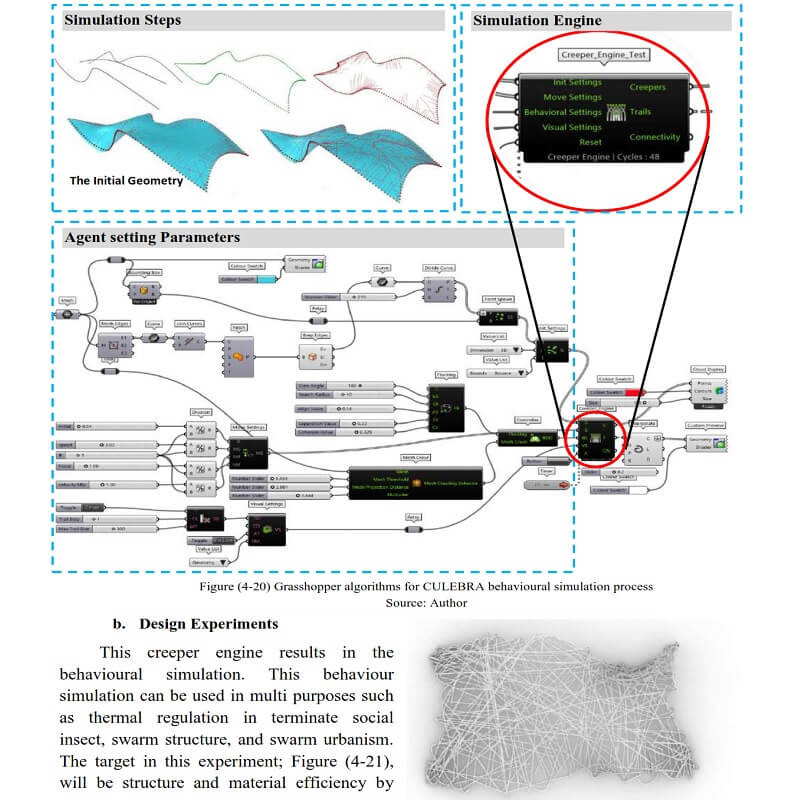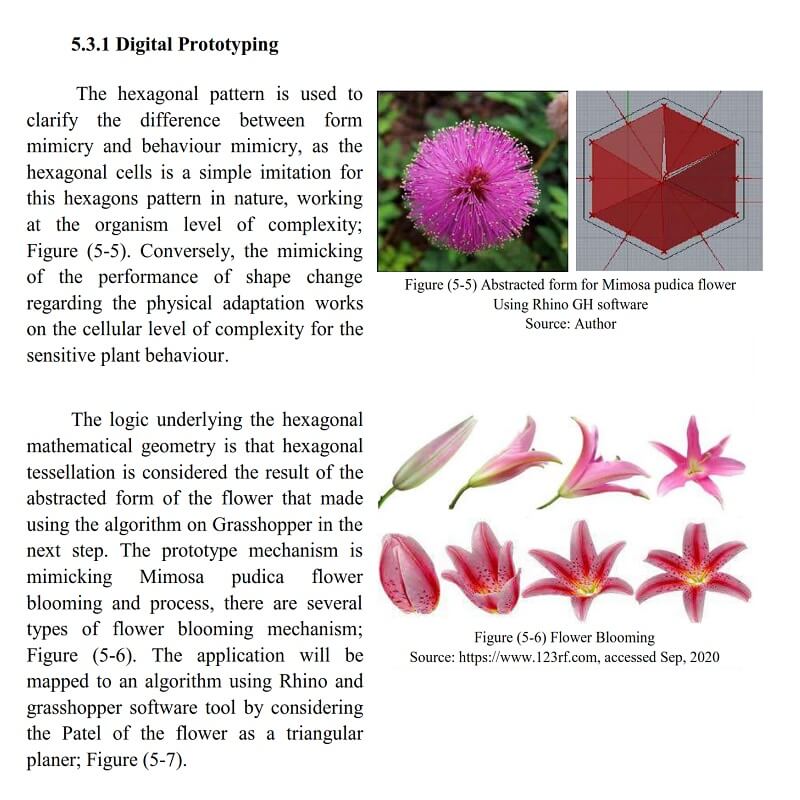Bio-Form Mimicry
Bio-Form Mimicry in Architectural Design
Hala Sayed Mahmoud Sayed Aamer
In partial fulfillment of the requirements for
The Degree of Master of Science in Architectural Engineering
Benha University
2021

This research by Hala Sayed Mahmoud Sayed Aamer is considered to be a step to exceed the theoretical stage of the integrated interdisciplinary approach between biology, technology, and architecture to the applied and practical stage.
 This thesis investigates biomimicry in architecture for the purpose of functionality rather than morphology, to achieve biomimetic building systems that provide improved building behaviour efficiency. Conventionally, the biomimetic approach in architecture has been limited to simple imitation.
This thesis investigates biomimicry in architecture for the purpose of functionality rather than morphology, to achieve biomimetic building systems that provide improved building behaviour efficiency. Conventionally, the biomimetic approach in architecture has been limited to simple imitation.
 This had an adverse impact on its functional performance, and lead to failure to fulfil sustainability as the main target. In fact, some architects have delivered remarkable projects with the help of the digital revolution. Many examples of successful bio-morphic architecture that used nature as a source of form can be seen.
This had an adverse impact on its functional performance, and lead to failure to fulfil sustainability as the main target. In fact, some architects have delivered remarkable projects with the help of the digital revolution. Many examples of successful bio-morphic architecture that used nature as a source of form can be seen.
 Projects were achieved by generating and controlling three- dimensional form; however, that successes do not necessarily mean they successfully transferred the performance of living systems to the building behaviour. They benefited from the simulation of biological behaviour to create a more complex form, but that is not enough to improve the building behaviour efficiency, despite the deep understanding of biology.
Projects were achieved by generating and controlling three- dimensional form; however, that successes do not necessarily mean they successfully transferred the performance of living systems to the building behaviour. They benefited from the simulation of biological behaviour to create a more complex form, but that is not enough to improve the building behaviour efficiency, despite the deep understanding of biology.
 The priority of biomimicry in architectural design is to transfer some extraordinary adaptations that have evolved in natural organisms into systems of building behaviour. This academic thesis mainly aims at creating a biomimetic design framework for building behaviour, which can be adopted by architects to design and develop biomimetic systems.
The priority of biomimicry in architectural design is to transfer some extraordinary adaptations that have evolved in natural organisms into systems of building behaviour. This academic thesis mainly aims at creating a biomimetic design framework for building behaviour, which can be adopted by architects to design and develop biomimetic systems.
 Accordingly, this purpose was achieved by creating a multi-phased biomimetic design framework, as a result of combining the conventional biomimetic design framework with technological aspects. The biomimetic approach could be transferred from the theoretical framework to the practical framework by highlighting the technological tools and methods used to apply biomimicry.
Accordingly, this purpose was achieved by creating a multi-phased biomimetic design framework, as a result of combining the conventional biomimetic design framework with technological aspects. The biomimetic approach could be transferred from the theoretical framework to the practical framework by highlighting the technological tools and methods used to apply biomimicry.
 In order to verify the proposed design framework, an experimental phase was conducted with the guidance of several mechatronic professionals and biologists. The practical application is a prototype for a responsive facade unit, starting with the abstracted life principles of a selected biological role model, and then transferring them into a digital model, and finally the stage of digital fabrication in order to evaluate the application of such approach to building behaviour.
In order to verify the proposed design framework, an experimental phase was conducted with the guidance of several mechatronic professionals and biologists. The practical application is a prototype for a responsive facade unit, starting with the abstracted life principles of a selected biological role model, and then transferring them into a digital model, and finally the stage of digital fabrication in order to evaluate the application of such approach to building behaviour.
 In fact, such practical experimentation helped in setting a clearer and more defined design framework from the conceptual stage to the implementation stage. The main finding concluded from this diverse and wide-ranged study was that the proposed framework is not meant to be strictly followed, but to be flexibly adopted as a guiding schema.
In fact, such practical experimentation helped in setting a clearer and more defined design framework from the conceptual stage to the implementation stage. The main finding concluded from this diverse and wide-ranged study was that the proposed framework is not meant to be strictly followed, but to be flexibly adopted as a guiding schema.






























Comments